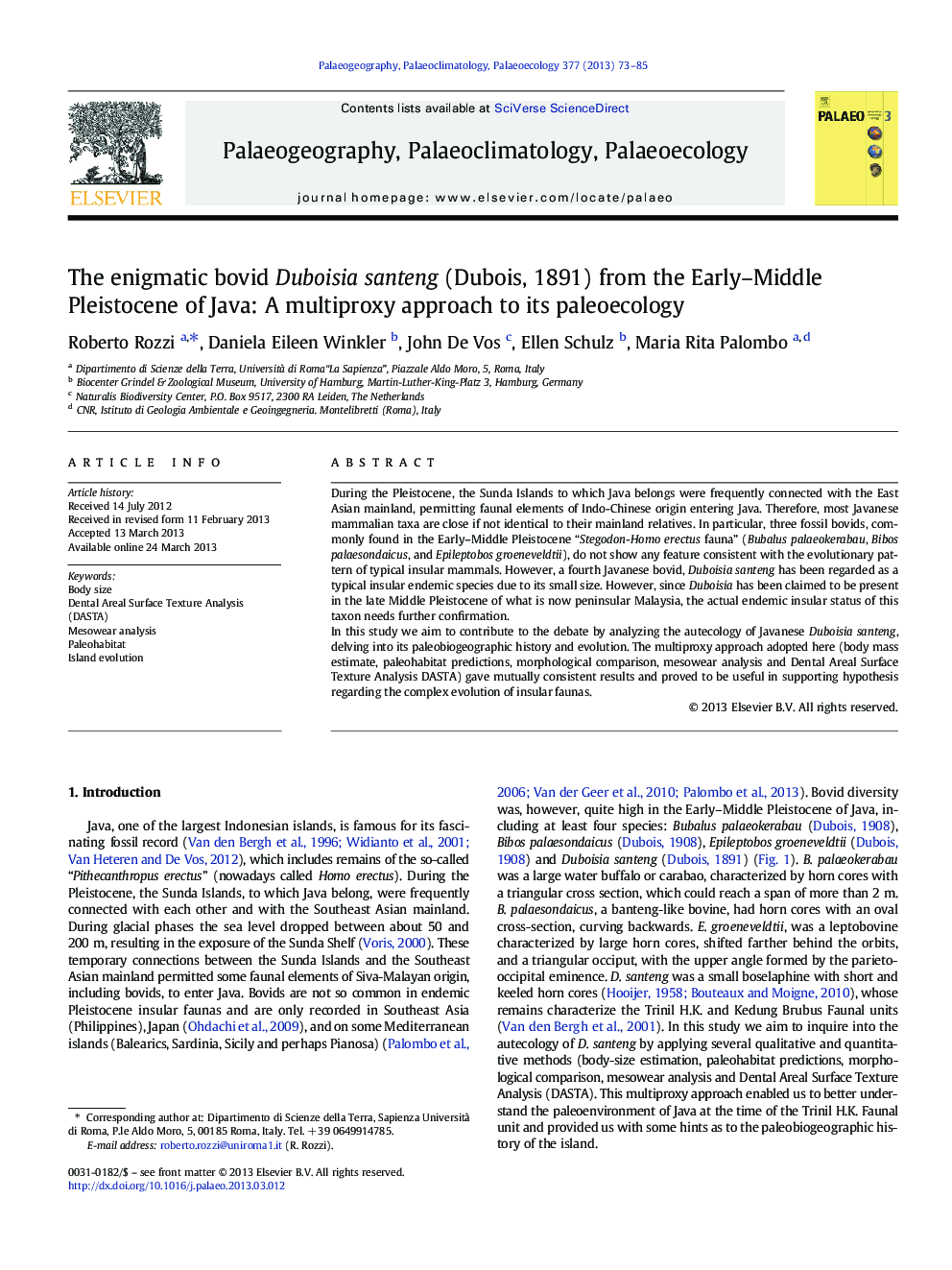| کد مقاله | کد نشریه | سال انتشار | مقاله انگلیسی | نسخه تمام متن |
|---|---|---|---|---|
| 4466572 | 1622209 | 2013 | 13 صفحه PDF | دانلود رایگان |

• We adopted a multiproxy approach to analyze the autecology of Duboisia santeng.
• We estimated its body mass and compared it with the one of its putative ancestor.
• We reconstructed its locomotion, paleohabitat and diet.
• We added details to the reconstruction of the paleoenvironment of Java.
• We delved into ecogeographic patterns and time and mode of colonization.
During the Pleistocene, the Sunda Islands to which Java belongs were frequently connected with the East Asian mainland, permitting faunal elements of Indo-Chinese origin entering Java. Therefore, most Javanese mammalian taxa are close if not identical to their mainland relatives. In particular, three fossil bovids, commonly found in the Early–Middle Pleistocene “Stegodon-Homo erectus fauna” (Bubalus palaeokerabau, Bibos palaesondaicus, and Epileptobos groeneveldtii), do not show any feature consistent with the evolutionary pattern of typical insular mammals. However, a fourth Javanese bovid, Duboisia santeng has been regarded as a typical insular endemic species due to its small size. However, since Duboisia has been claimed to be present in the late Middle Pleistocene of what is now peninsular Malaysia, the actual endemic insular status of this taxon needs further confirmation.In this study we aim to contribute to the debate by analyzing the autecology of Javanese Duboisia santeng, delving into its paleobiogeographic history and evolution. The multiproxy approach adopted here (body mass estimate, paleohabitat predictions, morphological comparison, mesowear analysis and Dental Areal Surface Texture Analysis DASTA) gave mutually consistent results and proved to be useful in supporting hypothesis regarding the complex evolution of insular faunas.
Journal: Palaeogeography, Palaeoclimatology, Palaeoecology - Volume 377, 1 May 2013, Pages 73–85